The Power of WHY NOT? {Courageous Teaching Part 3}
What’s the difference between asking Why? versus Why not? I’ve been thinking a lot about this lately. In my life, I generally get lots of why? questions: Why take your kids to Vietnam? Why ride a motorcycle? Why a tattoo of a bird? Why move out of one of the most beautiful places in California? Why never own a studio again? My answer for a long time to most of these questions has been why not? My husband and I are kind of known as why not kinda people. Why take your kids out of school for so long to travel? Why go through the ups and downs of owning your own businesses? Why not? We’re also known to our friends as Yes people. Wanna go to…? Yes! Why not?!
Since starting this series on Courageous Teaching, and having just spent three and a half weeks riding cross country on my motorcycle, I’ve been thinking A LOT more about the why not and what it means: wondering how it serves me; how it doesn’t; how the why not plays a part in the kind of teacher I am.
I’m not entirely sure of the answer yet, but here are some of the things I think might be true. Based on my own experience and the feedback of teachers who I’ve been asking about the Why not? perspective:
- Asking why not is not for everyone all the time. You HAVE to have a good baseline of Why? first.
- Asking why not opens you up to more possibilities. It also opens you up to more risk.
- Asking why not requires that you are in a position to take calculated, appropriate risk.
- Asking why not is a way of pushing the edges and straying from conformity.
- Asking why not more often exercises your ability to be flexible and malleable and also your willingness to be wrong.
- Asking why not is freeing and can be an opportunity to learn more about yourself and about the world.
- Asking why not is the beginning of discernment; discernment of self, other, context, knowledge, history.
- Asking why not can be scary. It requires bravery and wisdom.
- Asking why not can be totally stupid! And sometimes you should just stick to what you know.
- Asking why not seems like the opposite of asking Why? but it’s not a right or wrong kind of choice. Why not and why are both rebellious, searching, anti-authoritarian, risky, defiant, strong, and vulnerable. Why is straight ahead. It’s about understanding. Why not is about challenging. It’s about shifting understanding.
As I continue to evolve as a teacher, particularly as a teacher of teachers, I’m continuously aware of the interplay and interdependence of the why and the why not; how they influence one another and the timing of each. There are moments in our development when why is the key: understand the foundation from which you work; ask why so that you are clear about the implications of your teaching and how to safely adapt it; ask why so that you may feel confident in presenting work that is steady and consistent offering your students a solid place to learn from. Why not becomes relevant further down the road: Why not allow the student to move imperfectly? Why not change the order? Why not give the student permission to explore? Why not be quiet and allow for moments ambiguity?
This is evolution. This is conscious development. It’s marvelous and tricky, nonlinear, ever bobbing and weaving. In and out of our consciousness. Developing with each layer of understanding within each skill we might be in process with. Which if we’re lucky are many at once, prioritized by what’s in front of us. As we evolve and develop we can choose to ask why about some aspects of our teaching and why not about others. The rub is feeling out which one we need at any given moment and to do that we not only need to ask why we need to understand our WHY.
I’ve been known to say that getting clear about your values, or what I’ve long-since called your core commitments (taken from yogi and meditation teacher Sally Kempton) is one of the most valuable things you can do both for your personal and professional life. That your core commitments can, when articulated and reflective of your purpose or WHY for teaching, answer EVERY question you are confronted with. When you understand what drives you, what motivates your actions and inspires you to show up day after day and then live and teach by them, knowing when to ask why versus why not becomes easier, more organic, and more spontaneous.
Start with Why. End with Why Not.
Start with your WHY. One of my favorite questions to pose to my teachers these days is: What outcomes are you most dedicated to achieving with your students? With every student, no matter their injuries, abilities, or goals, what is the # 1 thing you want them to take away?
Many of us say body awareness or functional health. Some of us say strength and an ability to command their own bodies. Some of us say joy, the joy of movement in any form. Some of us would say pain relief or freedom. Whatever it is, acknowledging your outcome priorities can be a way of understanding what you’re willing to ask why not of.
Taking into account what we need to do, how much diligence we need to apply and in what areas, to keep our students safe is also a crucial WHY place to begin.
Many of the teachers I spoke with about this idea of the why not had the same concerns:
“It’s very exciting, but I feel like there has to be a balance between the two. If it’s just all Why not, then what am I teaching them.”
“I think it’s an evolution from the why to the why not. You have to be responsible and look at the calculated risk. Looking at that will allow you to ask the why not in a way that is safe.”
“Where I’m at in my teaching, I’m still working from the why. But I had a moment where I was asking myself why I would stick to this plan and not just let her explore the movement. Why stay with my plan and why not let her explore the movement. I could see how good it felt in her body.”
Experiment:
Next time you teach identify one area that you feel stuck or rigid in. Ask yourself, why am I doing it this way? Are you compelled or curious about doing it a little differently? Would you be sacrificing your student’s safety by allowing the why not to happen?
For example: You’re teaching kneeling side arms on the reformer. You notice that although your student is quite good at the choreography they continue to struggle to lighten their effort in the neck. You’ve already adjusted the springs, their position on the carriage, and the strap length. Up till now you’ve always taught the exercises with the pelvis staying square to the edge of the reformer with a focus on lumbopelvic stability.
What if you ask: How can I allow this body to relax and integrate more easily? Why not let the pelvis move? Will the student be safe if the pelvis moves? Will the intent of the exercise as you see it still be intact if you let the pelvis move? (In this example, the intent for me is to work on health shoulder mechanics and upper body organization; balancing mobility and strength in the upper quarter.)
Establishing Your Tolerance For Why NOT
There are lots of other ways we can, and need to, begin with the WHY. You can explore your core commitments and values. Identifying what’s at the heart of YOU leads you to greater understanding of your teaching self and therefore guides you in asking the why nots.
For instance, what things have you been most committed to throughout your life? Not what you have been told you should care about. Not what skills you’ve developed over time. What things have guided your most important decisions no matter how old, where you lived, who you were with, or what job you had. We all have to decide at some point what we value most. If we don’t, making small and big decisions becomes incredibly laborious and inconsistent.
Things I’m committed to: creativity, curiosity, travel and exploration, kindness, evolution, teaching. These qualities or ideas lead me most of the time to the why not. Many times they lead me to the why, but because of what I value (not getting it right, but figuring it out on my own — I’m stubborn and pigheaded) I’m more interested in the why not.
This is not true for everyone. And it changes. Which is why we have to keep asking the questions. Like this one: Why do I show up? To me that means, what’s my purpose and am I in alignment with what I think it is? Are my actions reflective of my purpose?
My purpose is to teach. Teaching is also one of my core commitments. When I make decisions about how to spend my time and how to develop my work I ask: Is this choice in alignment with my purpose? Will this choice enhance my ability to teach?
For me asking why not IS teaching because teaching IS exploration. If my purpose was to develop strength in my students I may be less tolerant of the why not. But then again, it depends on what I’m questioning.
Teaching From Why Not
There’s a moment in every adventure, once we’ve turned the same corners countless times, when an urge arises to simply change direction. Even when the road much traveled has proven a wise path to valuable results, most of us just need to know what else is out there, what else we might see. Sometimes we do this out of genuine curiosity, sometimes out of sheer stubbornness and willpower, sometimes out of desperation. No matter the reason, if we have a pulse, it’s inevitable. So how do we harness the why not for good, not evil?
Here’s what some teachers say about using the why not:
“What I love about the why not is that we have to start from the why then we go to the why not — feels like a shift from classical to contemporary — there’s a shift that happens. We can become very rigid. The why not opens us up to the realm of possibility…Is it wrong? Is there a wrong? I think it helps us as teachers have the authority and freedom and independence to move/teach from a different place.”
“This idea is the only reason I’m where I’m at in my teaching right now. If I hadn’t let go of the why and given way to the why not, I would not have been able to complete this [master’s] project. I just threw it out there with such strong trust! [If I hadn’t] I would’ve spun out in my top-down self…”
Asking why not, or at least asking am I ready for the why not could also look like asking:
- Am I speaking from my own voice?
- Am I leading from my own purpose?
- Am I making wise, safe, and genuine decisions about my teaching that require ME to be aware and present?
These are questions you can begin to explore for yourself to determine to what degree and around what areas of teaching you may be ready to start allowing for the why not.
How the Why not Can Change Your Teaching
Consider that your ability to ask Why not is a threshold over which you step to become more than a Pilates instructor; you become a teacher, beginning to establish your own authentic, experience-based authoring of the kind of teacher you most want to be.
Some of us are afraid of, or averse to, proclaiming authority. We think authority means we’ve reached an ending point, that we know better than others, that we have nothing left to learn or at least that’s the message our authority sends to our peers. For many of us that statement of authority is deeply uncomfortable. And yet owning our authority is simply our ability to honor and access our knowledge and skill with directness and humility; without hesitation, but with consistent openness.
Becoming the author of our teaching-self is critical at every stage of growth. Without authoring our work, our craft, our vocation we so easily slip into passivity and become beholden to other people’s WHYs. We miss out on opportunities to truly discern and discover for ourselves. Parker J. Palmer, teacher of teachers, academic, social justice advocate, founder of the Center for Courage and Renewal, and author of The Courage to Teach writes:
“Authority is granted to people who are perceived as authoring their own words, their own actions, their own lives, rather than playing a scripted role at great remove from their own hearts.”
‘At great remove from their own hearts…’ moves me the most. What I see in teachers is that they end up teaching ‘at great remove from their own hearts’, they forget why they show up, they misplace their passion and never really identified their purpose, making establishing genuine and tender authority almost impossible without a fair bit of work. Difficult, certainly, but the most valuable work worth doing.
How the Why Not Shows Up & Further Explorations
Once you know some of the why, what’s the value in teaching from the why not? This manifests in these ways:
- Why not just be quiet in your teaching?
- Why not let the movement be imperfect?
- Why not let the pelvis move?
- Why not allow there to be imperfection?
- Why not expect more from your students?
- Why not go to lunch with your students?
- Why not ask for more money?
Other questions you can ask:
- What is risk in teaching?
- Appropriate/safe/professional v. inappropriate/unsafe/unprofessional
- What is the risk/reward return?
The essence of the why not is untethering, limitless rather than limited, courage/bravery rather than fear and restriction, curiosity rather than getting it right; to open yourself up to questioning and discernment. It means anything’s possible. It means opening to potential rather than working from preconceived notions.
- How does this play out in your teaching?
- In your life?
- In how you run your business?

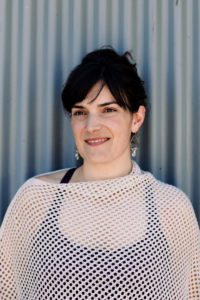
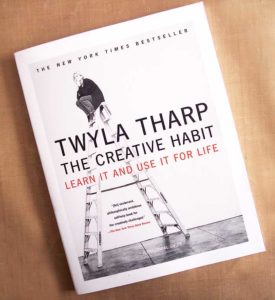
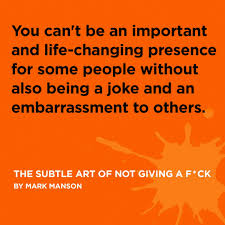
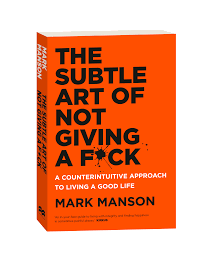
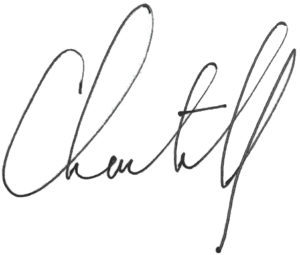
 How are you showing up? Why are you showing up? Why do you teach? What IS teaching? Why do you care? This is Skillful Teaching: A Whole-person approach to being an expert teacher, not an expert technician. There's a difference. Want to know what it is?
How are you showing up? Why are you showing up? Why do you teach? What IS teaching? Why do you care? This is Skillful Teaching: A Whole-person approach to being an expert teacher, not an expert technician. There's a difference. Want to know what it is?